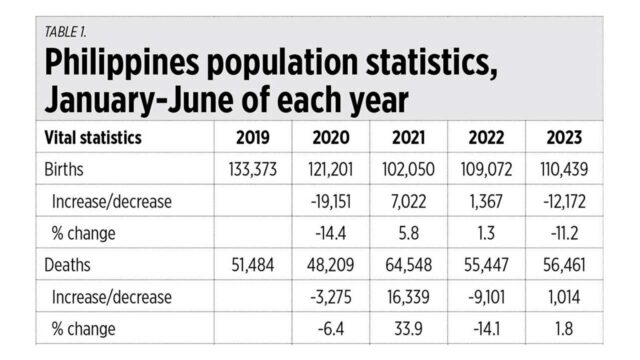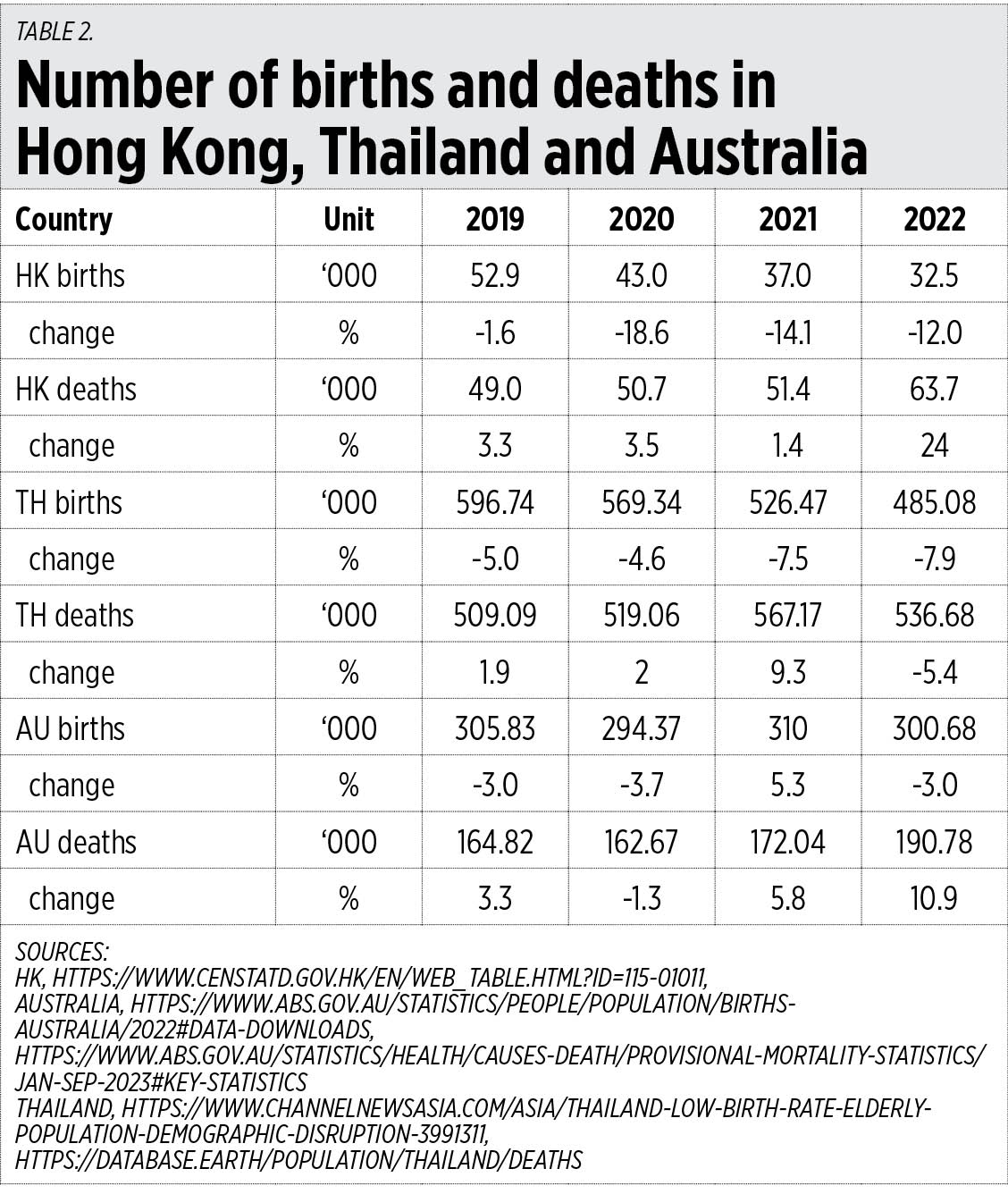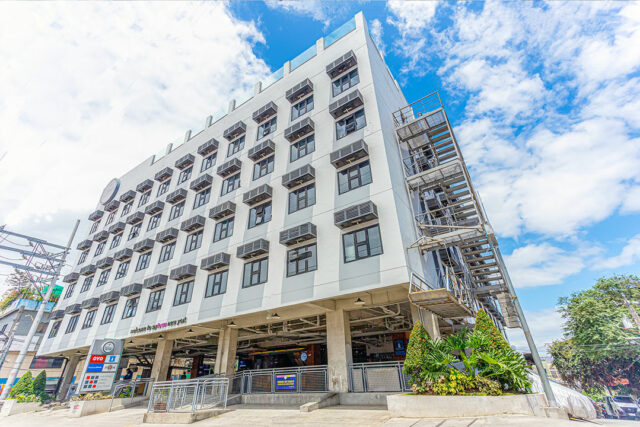Entertainment News (01/23/24)
Aurora Music Festival tickets now on sale
TICKETS are now on sale for the Aurora Music Festival which will be held at Clark Global City in Pampanga from April 6 to 7. The event will include live music and a display of more than 20 hot air balloons. The acts on day one will be SB19, Moira Dela Torre, December Avenue, Juan Karlos, Adie, and Cup of Joe. Day two will have Rico Blanco, Parokya ni Edgar, Kamikazee, Orange & Lemons, Itchyworms, and Andrew E. Produced by Epic Events, Eggstop, and Mr. Macchiato, the festival is a celebration of the OPM (Original Pilipino Music) scene. Tickets are now on sale via
https://ticket.epiceventsph.com/, all SM Tickets outlets, and Shopee.
Four Filipino films to be shown at Sundance
AMONG the 92 films at the Sundance Film Festival, which runs from Jan. 18 to 28 in Salt Lake City and Park City in Utah, USA, are four works by Filipinos. These are the documentary And So It Begins by Ramona Diaz, and the short films Dream Creep by Carlos A.F. Lopez, Thirstygirl by Alexadra Qin, and Bold Eagle by Whammy Alcazaren. “Each of these shorts delves into subject matters that aren’t typically discussed at the family dinner table — sex addiction, the pursuit of love and intimacy in the digital age, and the confrontation of both internal and external horrors. While these topics may radiate a certain seductive allure, beneath the surface, there exists a profound and delicate exploration of the human experience and challenges of navigating the world,” said Sundance Film Festival’s short film programmer Irene Suico Soriano.
Free screening of films on gaming history
A COLLECTION of critically acclaimed and award-winning documentaries on the history of gaming will be screened for free by the Museum of Contemporary and Design (MCAD) of the De La Salle-College of Saint Benilde. The selection provides the viewers with a 360-perspective of the video game scene, from its humble beginnings and ending with some of the key purveyors in the community. It touches upon the conflict of tradition versus capitalism between industry giants. It likewise takes the audience into the ins and outs of game development, commercialization, and its impact on the personal lives of its avid users. The films are: The Lost Arcade (2015) by Kurt Vincent about the legacy of the Chinatown Fair Arcade on the competitive fighting game community in New York City (it screens on Jan. 24); Console Wars (2020) by director Jonah Tullis, based on the 2014 novel of the same title by Blake J. Harris, it is about the 1990s rift between Sega and Nintendo (Jan. 25); Indie Games: The Movie (2012) by James Swirsky and Lisanne Pajot introduces the audience into the behind-the-scenes of Braid, Super Meat Boy, and Fez (Jan. 26); Free to Play (2014) looks at the lives of three professional Defense of the Ancients (DotA) players in the lucrative e-sports tournament (Jan. 27). The screening is the year’s first offering for MCAD x Moving Image, a program that presents a series of hybrid documentaries, video essays, narrative experiments, filmed performances, and archival audiovisions. It is free and open to the public. It will be held online via Zoom at noon on the scheduled dates. Interested participants may register through http://tinyurl.com/nhcza936. For more information, visit https://facebook.com/MCADManila.
Gloc-9 drops new single
ASIDE from performing at different gigs and festivals, Gloc-9 started his 2024 strong with a new single, “Labandero.” The track weaves a narrative of life’s challenges and the unwavering spirit required to overcome them. The song’s hooks and rap verses deliver a message of hope and determination. It is part of the recent OPM Rising playlist on Spotify and is now available on all digital platforms.
Animated comedy Migration now in cinemas
THE FILM Migration is animation company Illumination’s latest original comedy. It follows the Mallards, a family of ducks, whose father Mack (voiced by Kumail Nanjiani), is content to keep his family safe paddling around their New England pond forever, while mother Pam (Elizabeth Banks) prefers to shake things up and show their kids the world. They embark on a family trip, via New York City, to tropical Jamaica. Migration, from Universal Pictures International, is now showing nationwide.
Dhruv releases new single
SINGER-songwriter and producer Dhruv has dropped “Tragedy,” the new single off his debut album which is expected to be released later this year. The piano-led track is co-written by Dhruv and produced by JT Daly, and it chronicles the somber feeling of being on the losing end of a breakup after a failed attempt of reconciling with an ex. Conceptualized by Dhruv and filmed throughout London, the accompanying music video, directed by AboveGround, has Dhruv act out his own version of a tragedy as he searches for answers but instead finds bad luck at every turn. “Tragedy” is out now on all digital music platforms worldwide via Sony Music Entertainment.
Tokyo Revengers 2 now showing
WITH intense action and physical sequences, Tokyo Revengers 2: Bloody Halloween – Destiny showcases a conflict between the Tokyo Manji gang and the Valhalla gang. It is based on the best-selling manga series of the same name by Ken Wakui, and stars Takumi Kitamura as the driven lead Takemichi Hanagaki. According to action director Yuta Morokaji, the emotions of the characters play against the sharpness of the actions, with much of it filmed on a large junkyard set. The film is out in Philippine cinemas now.



















